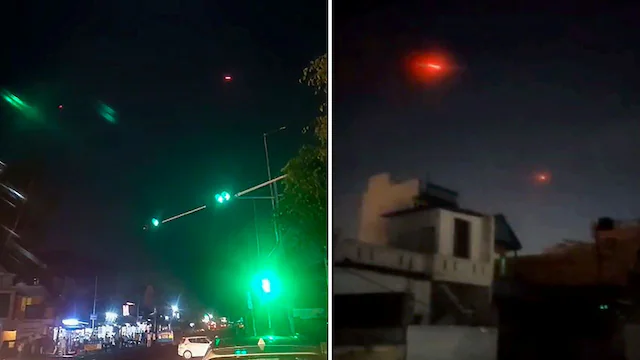After three days of unsuccessful attempts to damage our air bases and military installations, the enemy shifted focus to civilian targets, including Gurdwara Sahib, launching kamikaze drones and rockets. However, all incoming attacks were intercepted and shot down with remarkable precision, a soldier reported.

On Monday, May 19, the Indian Army showcased how its air defence systems effectively safeguarded the Golden Temple in Amritsar and multiple cities across Punjab from recent missile and drone attacks launched by Pakistan. The demonstration featured upgraded L-70 Air Defence Guns, the AKASH missile system, and several other advanced defence technologies.
A soldier from the Indian Army told news agency ANI that after failing to strike Indian air bases and military installations, Pakistan attempted to target the Golden Temple.
“Several kamikaze drones, surface-to-surface, and air-to-surface missiles were launched directly at the Golden Temple,” he said.
After failing to inflict any damage on our air bases and military installations for three days, they shifted their focus to civilian areas, including the Gurdwara Sahib, launching kamikaze drones and rockets. However, all air raids were intercepted and neutralized with remarkable precision,” he stated.
In response to the Pahalgam terror attack, India launched Operation Sindoor on the night of May 7, striking and destroying nine terror camps across Pakistan and Pakistan-occupied Kashmir within 25 minutes at around 1 a.m. Pakistan retaliated by deploying missiles and drones, which were successfully neutralized by the Indian armed forces. The intense military exchange continued over the next three days until both nations reached a ceasefire agreement on May 10.
Major General Kartik C Seshadri, GOC of the 15 Infantry Division, told ANI that the Indian Army employs a multi-layered air defence system designed to operate in all weather conditions. He explained that this system integrates detection and targeting capabilities across various ranges, supported by round-the-clock surveillance, tracking technologies, and fire control radars. The combination of missile and gun weaponry provides a robust and comprehensive defence capability.
These assets, combined with resources from the Air Force and Navy, are integrated through the indigenously developed, in-house AKASH system, providing a unified air picture that facilitates faster decision-making and the effective deployment of technology to neutralize all hostile aerial threats,” he explained.
Table of Contents
Maj Gen Seshadri echoed Union Defence Minister Rajnath Singh’s position, emphasizing that Operation Sindoor is not yet complete. He stated, “Remember, Operation Sindoor has only been paused, not ended. Its most intense phase is still ahead.
The soldier revealed that only 10% of the ammunition for ground-based and Army air defence systems had been utilized during the conflict. He also mentioned the recovery of Kamikaze drones along with micro-drones such as the YIHA-III and Songar, which are believed to originate from Turkey. “It remains extremely challenging to penetrate our air defence barrier,” he added.
The armed forces have begun emergency procurement of loitering munitions, counter-UAV systems, anti-tank guided missiles, and artillery ammunition to replenish stocks depleted during the recent conflict with Pakistan.
READ ALSO……Golden Temple Incident Followed India’s Anti-Terror Strikes: Army Claims Pakistani Involvement 2025














 Categories
Categories








